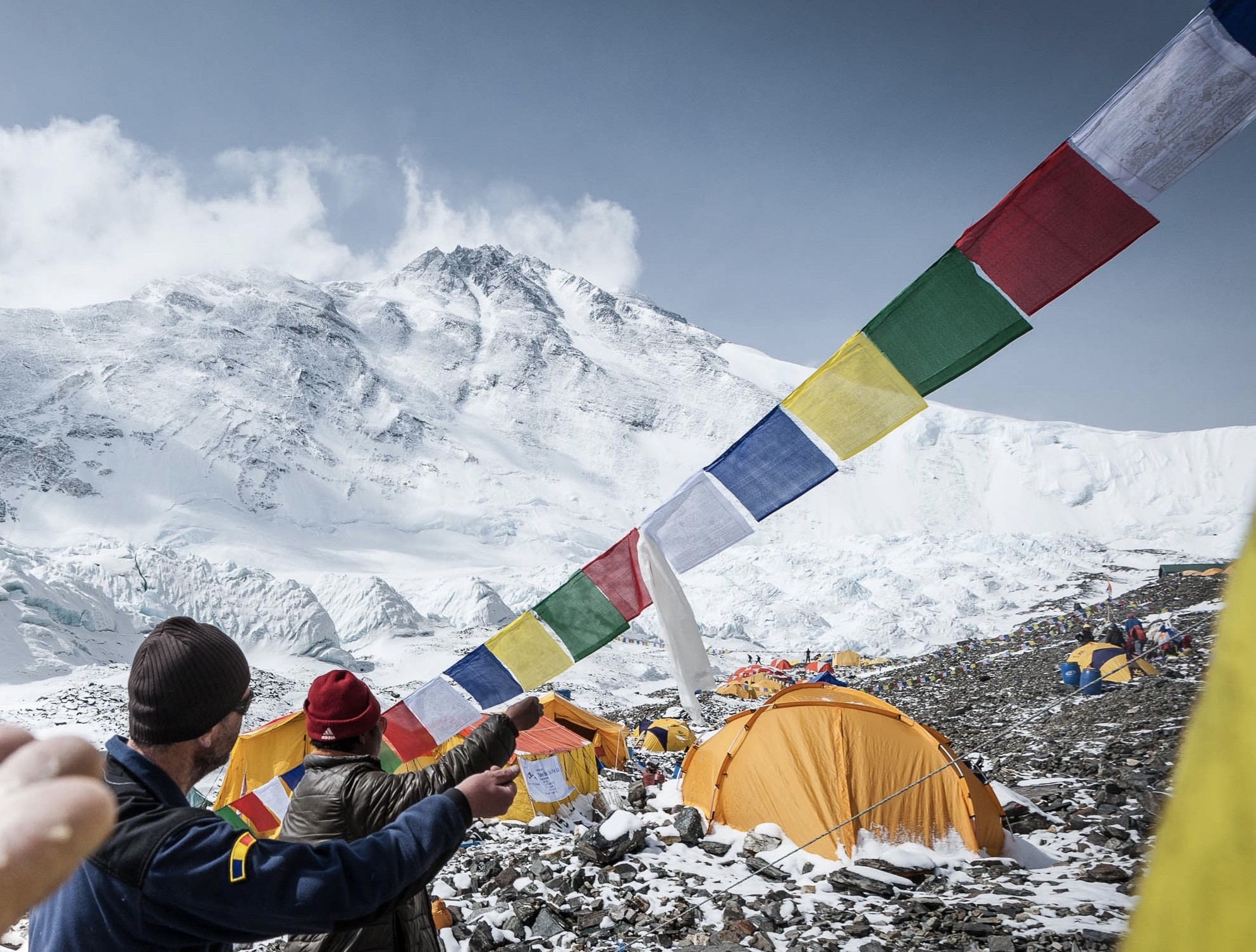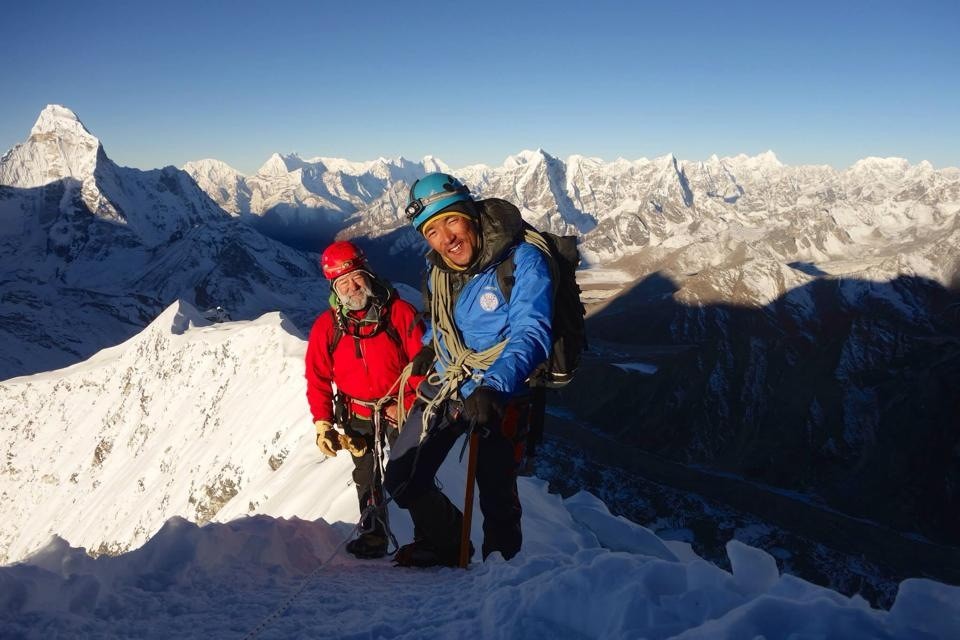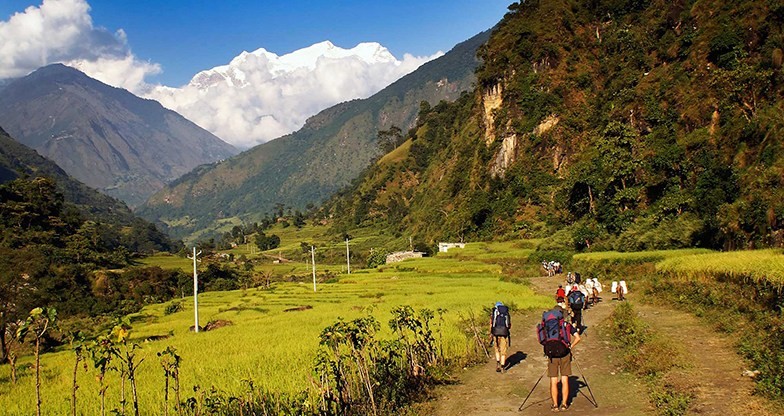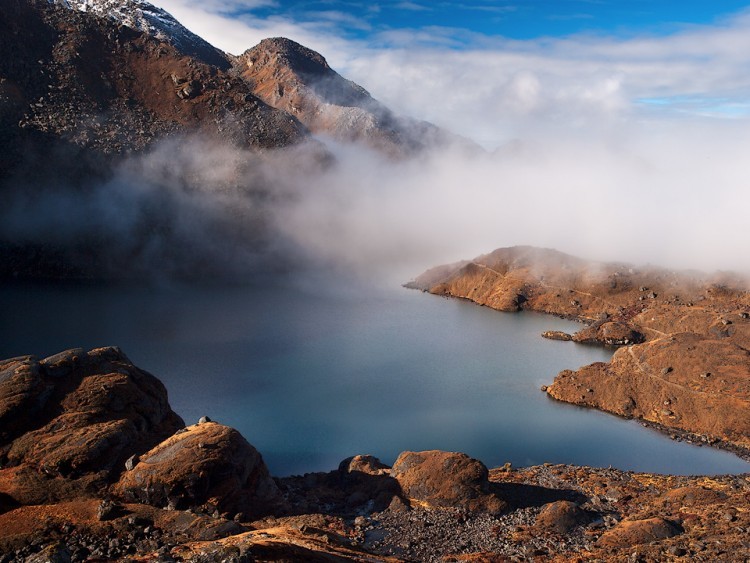

Without any doubt the EVEREST EXPEDITION is the world’s most challenging climbing expedition. Everest climb via North (Tibetan) side is the least expensive way to climb it. Everest expedition from Tibet side has become more popular among the mountaineers to make their dream come true to stand on the summit of Everest.
Among the several reasons, low cost of royalty and other basic mountaineering services as well as the safest route to the summit are the key factors to attract more
Everest climbers from North Col. than from the South Col. Everest can be climbed both from the southern side Nepal and northern side Tibet. Mt.
Everest was first summitted in 1953 by Tenzing Norgay Sherpa and Edmund Hillary via the South Col. Climbing Mt. Everest is certainly a lifetime opportunity. However, Everest expeditions encounter many seen and unseen obstacles including high altitude, harsh weather conditions and even sheer exhaustion. Therefore, we strive hard to conduct the best expedition program putting high importance on the safety aspects of the climb.
Despite being the highest mountains on planet Earth, the Himalayan range of mountains including Mt. Everest are relatively younger than their American and European counterparts like the Andes, the Alps, and the Rockies. The Everest has fascinated the mountaineers all over the world since the European climbers discovered the Everest when Tibet was opened to outsiders in the 1920s. We believe that our planning, logistics, staffing and experience coupled with your enthusiasm, patience, and perseverance would help you achieve your lifetime dream.
Unlike the South Col route in Nepal, the North Face expedition offers a quieter and less crowded approach to the summit, allowing climbers to immerse themselves in the pristine wilderness of the Tibetan Plateau.

Trip Highlight
DAY
1
DAY
2
DAY
3
DAY
4
DAY
5-7
DAY
8
DAY
9
DAY
10
DAY
11-13
DAY
14
DAY
15
DAY
16-53
DAY
54
DAY
55
DAY
56
DAY
57
DAY
58
DAY
59
Trip Start: 2025-04-07
Trip End: 2025-05-28
spots available
Having the right equipment on your expedition will make almost as much difference to your safety, comfort, and enjoyment as any physical training you do. It is essential that you take the time to acquire the correct gear; don’t wait for the last minute to find out your local shop doesn’t have your size. This equipment is expensive, but you can often find great sales online and at your local gear store. The purpose of this gear list is to help guide your purchases. Often salespeople in your local shop do not have first hand knowledge of high-altitude climbing, so be sure to balance their advice with what you read here. We have strived to create a list heavy on detail, but there are always further questions!
During your expedition in Nepal you will encounter a very wide range of temperatures and weather conditions. At one end of this range are the pleasantly warm and beautiful lowlands around Lukla, while at the other end of the spectrum is the cold and often windy weather up amongst the glaciers and the highest peaks in the world, before summit day itself. The equipment you
bring must function well in a wide variety of conditions. Your clothing should be warm, lightweight, dry quickly, and allow good freedom of movement. Adhere to the layering principle: several thin layers of insulation (rather than one thick one).
This list is a guide. While you are required to bring everything on this list, there are numerous options, brands, and versions of each piece of equipment, unless otherwise noted. Using our current suggested brand list we encourage you to shop around, do research, even borrow, and use your experience with our list to find the best gear for you.
Purchasing the specific items listed below will ensure you have the right tool for the job, but there are other options on the market.
A note on the packing
For your international 9lights, we recommend that you pack all your
equipment in your two larger duf9le bags. Do not simply pack your
backpack (since the straps can be damaged by the baggage handling
machines). It is important to lock these bags for their trip. Depending
on the airport, you may be able to put your travel locks on after TSA
has searched the bags. If not, lock the bags with zip ties. If the TSA cuts
off the zip tie to search your bag, they will replace it. You will still need
the travel locks to lock your bags in the hotel and during the expedition. Generally, you will take two duffels up to Base Camp, and leave the
third in the hotel in Kathmandu with your belongings for time in the
city. ONE of the duffels going up to Base Camp can be sent on ahead
(with items not needed for the trek in, such as climbing gear) and this
bag will not be seen until we arrive at Base Camp. The other will be
accessible during the trek in the evenings (with items that are needed for
the trek in such as changes of clothing, sleeping bag). SO it’s easy – 1st
bag is with you, the 2nd is ahead going up to BC and the 3rd is left
behind for afterward – 3 duffels!
Body Wear
Head Wear
Hand Wear
Foot Wear
Packs & Bags
Camping Gear
Accessories
Climbing Equipment
Travel Gear
Pack the above items into the following bags ready for your flight to Lukla, trekking and Base Camp.
Kathmandu Duffel Bag
This bag will remain in Kathmandu and contains everything you will not need during the expedition.
Trek Daypack/Daywear
This will be the pack that you carry with you on the plane to Lukla and while on the trek.
Wear your trekking clothes (trekking pants, shirt or long sleeved top and fleece jacket) and boots; pack any spares in your trek duffel. Make sure you have enough clothes with you to keep warm in case you get to the lodge before your porter and trek duffel.
Trek Duffel Bag
This bag contains the items that you will need during the trek. Porters will carry this bag to the lodge that you are staying at each night. You will not have access to this bag during the day
Base Camp Duffel Bag
This bag contains everything that you will need for the climb and Base Camp only. This bag will go directly to Base Camp.
You will not have access to this bag until you arrive at Base Camp.
1
No. All the permits will be arranged by Adventure Sherpa Tracks team after validating a climber’s attempt to climb a definite peak or a route.
2
Yes, insurance is necessary for all our expeditions and trekking. You are responsible for getting the proper insurance for the trip. Please make sure your policy covers medical as well as rescue evacuation costs.
3
The Sherpas are incredible allies in climbing these big mountains. They fixed ropes, carry heavy loads and generally do the hard work. The term “sherpa” is often used to describe any person who acts as a porter or guide, but the Sherpa people are actually an ethnic group native to the mountainous regions surrounding the Himalayas. Though Sherpas regard the mountains as homes of the gods and did not pursue their summits until Western influences arrived, mountaineering is now a prominent part of Sherpa life. Many Sherpas work as guides on Mount Everest, but they also do the dangerous work of setting up the ropes and ladders that climbers use on their way to the summit, construct and manage camps, and carry belongings and vital supplies, such as supplemental oxygen canisters.


